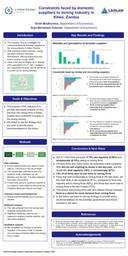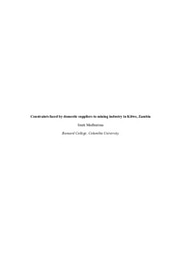Numbers VS attitudes in social science
My research this summer was on constraints faced by local firms in Kitwe, Zambia preventing them from supplying to mining firms. During my research, I came across an unexpected conflict between the quantitative data versus qualitative attitudes.
In the survey collected by my mentor and her team, we not only collected data on different characteristics of these firms, but also had a specific section dedicated to atittudes and perceptions of firms towards different statements. This section, although recorded numerically on a five-point Likert Scale, had a qualitative nature since it captured attitudes and perceptions rather than strict realities.
When it came to analysing the data, I was struck with the realisation that my quantitative finds were sometimes at odds with these qualitative attitudes. For examples, most firms said they were not at all reliant on the mining industry, but as I discussed with my mentors, it is likely this perception could be a result of a desire to not admit to over-reliance, or multiple other factors. The summary statistics gave us a different picture, where we found that the local economy of Kitwe was in fact largely dependent on mining, at least on paper.
This led me to reflect on a fundamental conflict faced by many social scientists–how would I reconcile the differences in attitudes and reality? My mentor was extremely helpful in helping my talk it out and discuss this issue with her. I came to the conclusion that this conflict is always going to be present as a limitation in mixed-methods research, and the best way to go about my work would be to acknowledge and account for both. I decided to focus on the quantitative data, since most of my research was based on statistical analysis. However, I ensured that I referred to the qualitative data in my interpretations in order to provide a more well-rounded picture of my area of research.


Please sign in
If you are a registered user on Laidlaw Scholars Network, please sign in